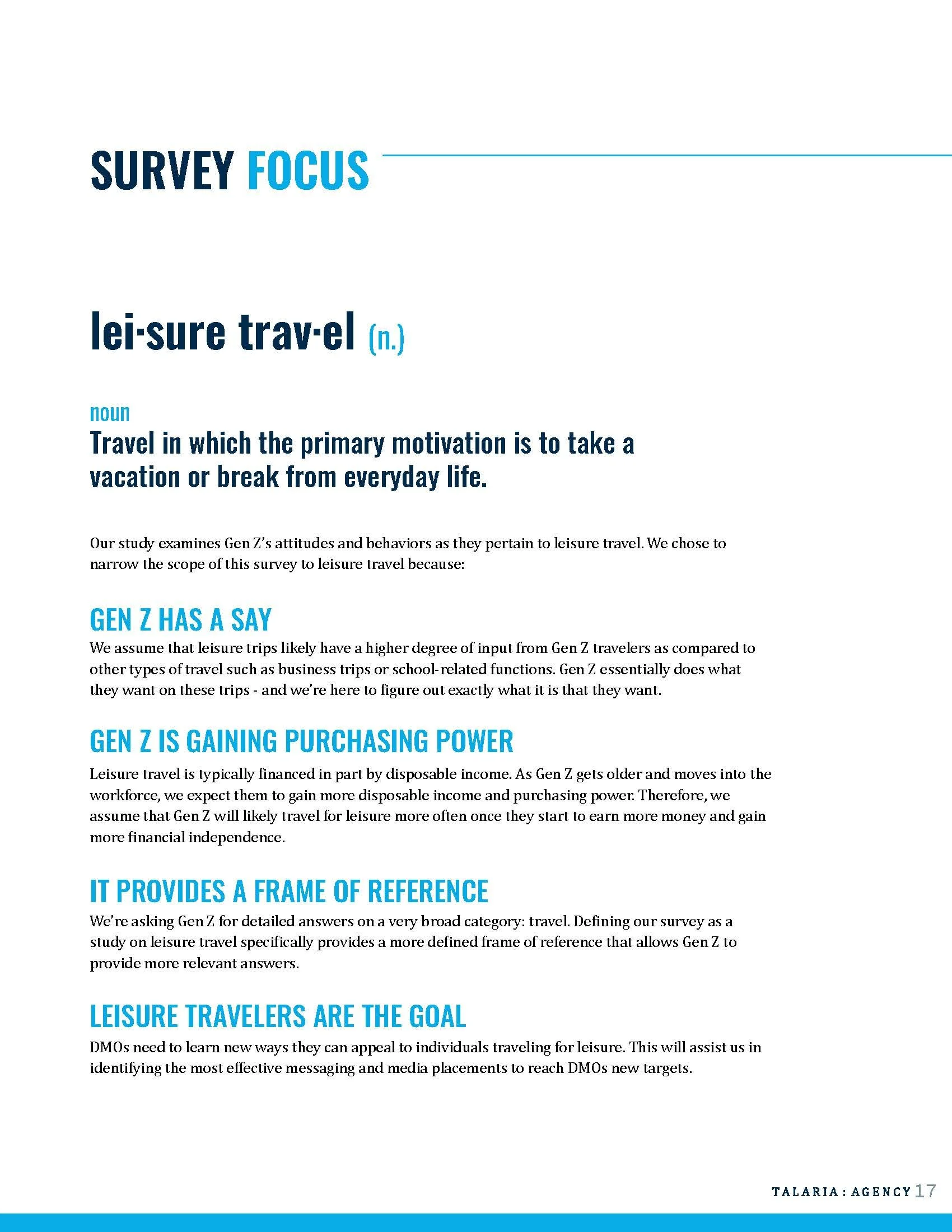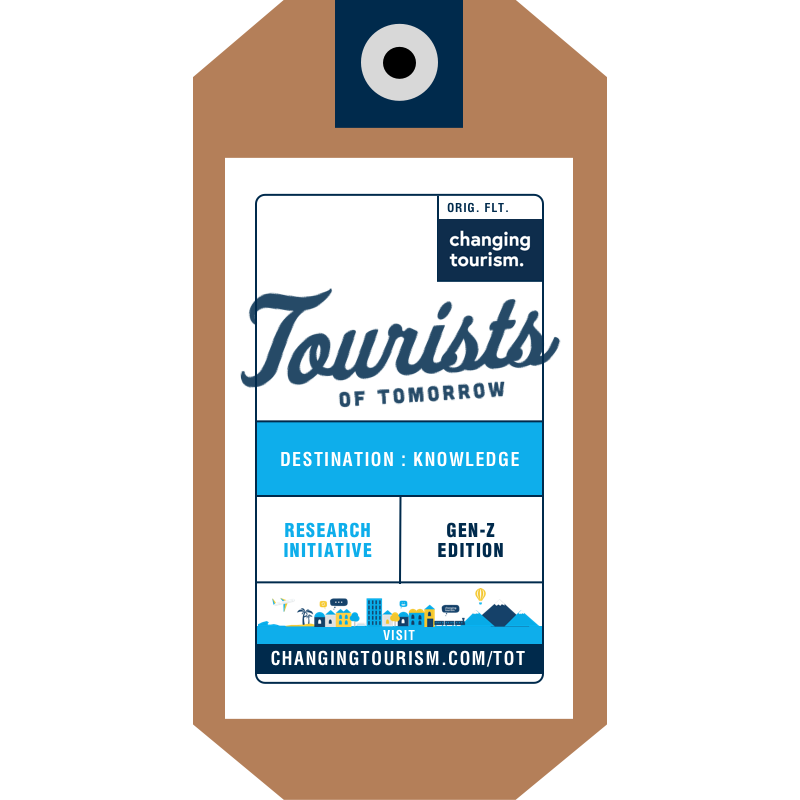Tourists of Tomorrow
Tourists of Tomorrow
Tourists of Tomorrow is a research initiative examining the future of travel and defining the future of tourism: Gen Z. Over the course of two months, my team and I reviewed industry trends, conducted interviews, and collected primary survey data to craft our 2019 Phase One Report.
Strategy Overview
The Situation
The travel and tourism industry is evolving, but destination marketing organizations (DMOs) are falling behind.
The OPPORTUNITY
Gen Z already has a strong presence in tourism, but they will soon have the autonomy and spending power to plan trips of their own.
The Challenge
DMOs are focusing on (and supported by) hotels, group tours, and conventions—none of which hold much appeal among Gen Z.
The Goal
Gain a better understanding of Gen Z to identify opportunities for DMOs.
Research Approach
The Big Question
How can DMOs appeal to and attract Gen Z travelers?
Research Objectives
1. Describe Gen Z
2. Determine how to reach Gen Z
3. Identify influential habits and factors
4. Analyze purchase behavior
Methodology
Department Focus Group Interviews
Gen Z Survey Data Analysis
Audience Segmentation
Persona Development
Tactical Recommendations
Phase One Report
Research Initiative Pitch
Survey Results
244
Respondents
22
States Represented
156
Email Leads
Key Findings
Survey
After observing responses individually, we began analysis between variables to see if any significant relationships existed among our responses. Surprisingly, we did not find significant differences between male and female respondents—their reported preferences, habits, and activities were relatively similar. However, a trend began to emerge after cross-analysis of responses by age. This would make sense because Gen Z individuals are split across three very distinct age groups and life stages.
Audience Personas
We were able to segment the Gen Z audience into three key segments. We then crafted a persona for each based on key demographic and behavioral trends. These personas are perhaps the most actionable findings produced by our survey especially as they relate to potential targeting and messaging.







































